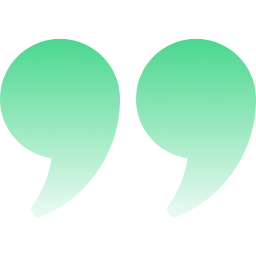How VR Training Can Bridge the Gap of 10 Million Healthcare Workers by 2030
How VR Training Can Bridge the Gap of 10 Million Healthcare Workers by 2030
VR provides a safe yet highly effective training environment, equipping healthcare workers with essential skills without the logistical and financial constraints of traditional training programs.
Introduction
The World Health Organization has been sounding the alarm: by 2030, it is estimated that the world will experience a staggering shortage of 10 million healthcare workers, with the most acute deficits occurring in low- and middle-income countries. This shortage threatens to strain already fragile health systems, undermine global health security, and limit access to essential care.
Traditional solutions such as increasing medical school enrolments and expanding on-the-job training programs are often slow, expensive, and impractical in resource-constrained environments. To bridge this gap at scale, the healthcare industry must embrace transformative technologies, and Virtual Reality training stands out as a game-changer.
VR-based training has matured beyond novelty and is now a powerful tool for medical education, skill development, and workforce scaling. By immersing learners in realistic, interactive simulations, VR provides a safe yet highly effective training environment, equipping healthcare workers with essential skills without the logistical and financial constraints of traditional training programs.
Accelerating Skill Acquisition
VR allows trainees to repeat and practice scenario-based learning experiences in a way that reinforces procedural knowledge and clinical decision-making. For instance, skill training programs based on VR allows learners to perform difficult procedures multiple times to improve their accuracy and confidence before working on real patients. This experiential learning model significantly reduces the time taken to attain competency compared to classroom instruction.
Scaling Training at Lower Costs
Medical education is too costly, as it requires years of education, high-tech equipment, and costly faculty support. VR reduces parts of these barriers by providing accessible, standardized training programs. A VR station and software are far more affordable than sourcing a multitude of equipment, making high-quality training accessible even in remote and underserved regions.

VR-based training has matured beyond novelty and is now a powerful tool for medical education, skill development, and workforce scaling

Expanding Access to Under-Resourced Areas
Low- and middle-income countries suffer from a gross shortage of healthcare professionals. The use of VR training in these regions will help train a large number of community health workers, nurses, and physicians without the need for them to move to other locations for training. Organizations such as the WHO and UNICEF have already tested VR-based programs to train frontline healthcare workers in maternal care, infectious disease response, and emergency procedures.
Specialized Training Without Geographic Barriers
One of the advanced medical procedures that need concentrated training through a specialty that is available in only select urban centres now gets eliminated from geographical barriers through remote access to world-class expertise. For example, students in rural colleges and hospitals may acquire advanced techniques in real time from global mentors through tele-mentoring while sitting in VR-enabled environments.
Minimizes Medical Errors and Patient Safety
Medical errors are among the top causes of patient harm and mortality. VR training enables healthcare professionals to simulate procedures in a risk-free environment, enhancing their decision-making and technical accuracy. It has been shown that VR-trained professionals exhibit fewer errors and more adherence to best practices than traditionally trained ones.
The healthcare workforce crisis requires bold, scalable solutions. VR training is a shift in medical education that provides immersive, cost-effective, and scalable solutions to bridge the healthcare workforce gap. Governments, academic institutions, and healthcare organizations must embrace such technology to equip the next generation of healthcare professionals and ensure millions of patients worldwide receive the care they deserve. The time to take action is now.

To Stay Updated
Latest Blogs
How to Use MediSim VR's Skill Training in Virtual Environment (STRIV) as a Medical and Nursing Student
By KAVYA • 6-minute read
How to Create the Ultimate Protocol Learning Experience
By KAVYA • 5-minute read
Rethinking OSCE Prep: Why VR Is the Missing Piece
By KAVYA • 4-minute read
